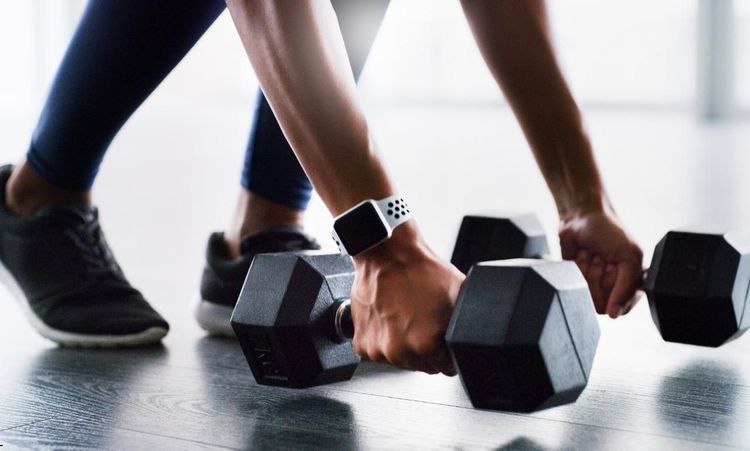You don’t realize how much your wrists do until they start hurting. Typing, lifting, cooking, playing an instrument, or carrying groceries — the wrists are behind all of it. Yet, they’re often neglected in training routines.
Think about it: people train arms, abs, and legs, but few ever dedicate time to their wrists. Strong wrists aren’t just for athletes or gym regulars. They’re essential for anyone who wants better grip, steadier hands, and fewer injuries. Whether you’re hoisting dumbbells or working long hours at a computer, wrist strength matters.
This guide takes you through five exercises that build stronger, more stable wrists while keeping them flexible and resilient. You don’t need a fancy gym membership — just consistency, focus, and a few simple tools.
The Importance of the Forearm or Wrist Muscles
Your wrist strength isn’t just about the joint itself. It’s a reflection of your forearm health. The muscles and tendons running through your forearm power every movement your hands make. When those muscles weaken, your wrists pay the price.
A strong wrist gives you control. It helps with everyday motions — holding a cup of coffee, twisting open a jar, or carrying a heavy bag. For athletes, wrist stability means better power transfer in swings, throws, and lifts. For others, it prevents fatigue from repetitive tasks like typing or drawing.
Neglecting wrist training leads to stiffness and imbalance. Weak wrists can’t properly support the small stabilizing muscles, and that’s how strain creeps in. On the flip side, regular strengthening enhances coordination and keeps tendons supple. Over time, this small habit builds lasting resilience.
The Anatomy of the Forearm
To strengthen your wrists, you have to understand what’s actually moving. The forearm is made of two bones — the radius and ulna — surrounded by a bundle of muscles that control both your wrist and fingers.
On the inner side are flexors, which bend your wrist toward your palm. On the outer side are extensors, which do the opposite. Together, they balance each other out like a well-tuned seesaw. When one group gets stronger while the other stays weak, you start to feel tightness or soreness.
That’s why wrist exercises need to target both sides. Balanced muscle development ensures smoother movement, better endurance, and far fewer aches. It’s not about brute force — it’s about harmony between strength and control.
Wrist Strengthening for Beginners
If you’re new to wrist training, the key is starting small. The wrists aren’t designed for heavy loads right away. Unlike bigger muscles, they take time to adapt. Focus on technique first, then slowly add resistance.
You’ll only need a barbell or a pair of dumbbells — even household objects like water bottles can work. The goal is slow, deliberate movement, not speed. Each exercise below helps strengthen a specific area of the wrist and forearm, ensuring complete development over time.
Barbell Wrist Curls
The barbell wrist curl is a staple exercise for building wrist flexor strength. These are the muscles responsible for bending your wrist toward your palm — the ones that give your grip that firm, confident feel.
How to perform: Sit on a flat bench and rest your forearms on your thighs, palms facing upward. Hold a barbell with both hands. Let it roll slightly toward your fingers, then curl it upward by flexing your wrists. Lower it slowly to feel the stretch in your forearms.
Pro tip: Keep your elbows planted and your motion controlled. Avoid swinging the barbell or rushing the lift. Three sets of 15 slow reps will do wonders.
The beauty of this move lies in its simplicity. It’s one of those quiet exercises that, when done regularly, completely changes how your forearms look and perform.
Barbell Reverse Wrist Curls
Once you’ve mastered standard curls, it’s time to train the muscles on the other side. The barbell reverse wrist curl targets the wrist extensors — the ones that pull your hand upward. These often get neglected, which leads to muscular imbalance.
How to perform: Use an overhand grip, palms facing down. Rest your forearms on your thighs, wrists hanging slightly off the edge. Slowly lift the barbell by extending your wrists upward. Pause at the top, then lower it with control.
This exercise might feel awkward at first because your extensors are usually weaker than your flexors. Start light — even an empty bar can be enough in the beginning.
Why it matters: Balanced forearm strength keeps your wrists stable and healthy. It’s particularly useful for people who type, play instruments, or lift weights frequently. Balanced muscles mean fewer injuries and better endurance.
Dumbbell Wrist Curl
When you move from barbell to dumbbells, something changes — independence. Each hand now works on its own, which exposes and corrects any strength imbalance between your wrists.
How to perform: Sit on a bench with your forearms resting on your thighs. Hold a dumbbell in each hand, palms facing upward. Let the dumbbells roll toward your fingers, then curl them upward until your wrists are fully flexed. Lower slowly and repeat.
Dumbbells make you focus on control rather than just movement. You’ll feel your wrists working harder to stabilize.
Pro tip: Breathe evenly and don’t grip too tightly. Gentle but firm holds improve endurance. Aim for three sets of 15 reps per arm. Over time, your grip and wrist coordination will feel noticeably stronger.
Dumbbell Reverse Wrist Curl
If you want balanced wrist development, the dumbbell reverse wrist curl is non-negotiable. This movement focuses on the extensors again, but with individual control on each hand.
How to perform: Hold a dumbbell in each hand with your palms facing down. Rest your forearms on your thighs or a bench. Lift the weights by extending your wrists upward, hold for a moment, then lower them slowly.
You’ll feel the burn almost immediately — a clear sign you’re hitting those often-overlooked muscles.
Why it works: Strengthening extensors supports better wrist alignment and mobility. It’s also excellent for improving endurance in repetitive wrist activities, like playing guitar or using a mouse all day.
Keep the weights light but the form precise. It’s the control that builds stability, not the size of the dumbbell.
Reverse Barbell Curls
While the previous exercises isolate the wrists, the reverse barbell curl brings in the entire forearm. It’s a hybrid move that strengthens the brachioradialis — a thick muscle running along the top of your forearm — while still working the wrists.
How to perform: Stand upright with your feet shoulder-width apart. Hold a barbell with an overhand grip. Keep your elbows tucked close to your sides. Curl the bar toward your shoulders, then lower it slowly.
The key here is to move smoothly and avoid using momentum. This is not a power lift; it’s about steady strength.
Why you should include it: Reverse curls give your forearms that rounded, powerful look and make your wrists more resilient. They also translate well into sports, where grip strength and forearm endurance determine performance — think tennis, golf, or climbing.
You can switch to an EZ curl bar if straight bars feel uncomfortable on your wrists.
Building Strength Safely
Your wrists are small, delicate structures compared to other joints. Overworking them too soon can cause tendon strain. That’s why progression is crucial. Start with manageable resistance and increase gradually.
Always warm up before any wrist workout. Gentle stretches and rotations help lubricate the joints. After training, cool down with light stretches to maintain mobility.
If you feel sharp pain — stop. There’s a difference between muscular fatigue and joint strain. The goal is to strengthen, not punish, your wrists.
When to Increase Intensity
As your wrists adapt, you’ll notice the exercises becoming easier. That’s your cue to level up. Add small weight increments, but prioritize form over load. A few pounds make a big difference in wrist training.
You can also increase repetitions or slow your tempo for added challenge. Some lifters use grip tools, thicker bars, or resistance bands for variety. The trick is to keep tension without sacrificing technique.
Think of wrist training as skill practice — precision beats brute force every time.
Everyday Benefits of Stronger Wrists
The payoff extends far beyond the gym. Strong wrists make life easier. From holding heavy shopping bags to mastering a yoga pose, stability shines through.
If you play an instrument, wrist strength enhances control. If you’re an artist, it gives smoother strokes. For desk workers, it reduces fatigue and soreness from hours of typing or clicking.
Athletes see it too — better racket control, more powerful swings, steadier grips. Even manual laborers benefit, as stronger wrists protect against repetitive stress injuries.
Simply put, it’s the kind of strength that quietly improves everything you do.
Mistakes to Watch Out For
Many people jump into wrist training the wrong way. Here are a few common pitfalls to avoid:
- Using too much weight. Wrists need precision, not overload. Heavy weights strain tendons instead of strengthening them.
- Skipping warm-ups. Cold joints are stiff and injury-prone. Always rotate, stretch, and prepare before lifting.
- Ignoring extensors. Training only the flexors creates imbalance. Always work both sides for full stability.
- Poor posture. Keep your arms still and wrists in neutral alignment. Letting elbows move ruins form and effectiveness.
These may sound minor, but correcting them transforms results and keeps your wrists healthy for the long haul.
Motivation: Why Wrist Workouts Are Worth It
Wrist training isn’t glamorous, but it’s foundational. People often overlook it because results aren’t as obvious as chest or biceps gains. Yet, those who commit see major benefits in control, endurance, and overall performance.
The best part? Wrist training takes little time. Ten minutes at the end of a workout can strengthen your grip, stabilize your arms, and prevent injuries down the road.
Stay consistent. Celebrate progress, no matter how small — an extra rep, a smoother curl, or less fatigue during daily tasks. These are the signs of quiet success.
Conclusion
Your wrists are small but mighty — and they deserve attention. Strengthening them not only boosts performance but also safeguards long-term mobility.
By regularly practicing barbell wrist curls, reverse curls, dumbbell variations, and reverse barbell curls, you’ll build solid, balanced wrists capable of handling everyday challenges and athletic demands.
Start light, stay patient, and let progress unfold naturally. Wrist training doesn’t shout for attention, but it pays back in every movement you make — steady, strong, and pain-free.




